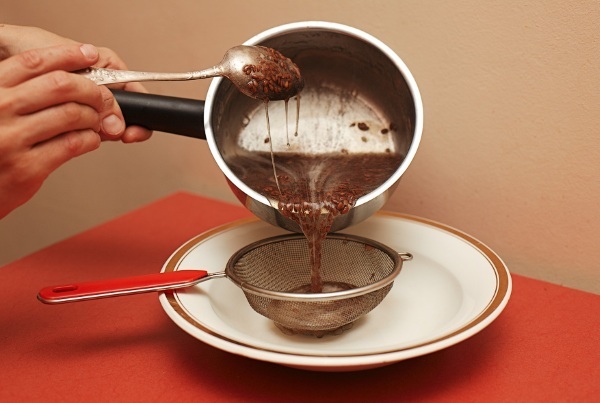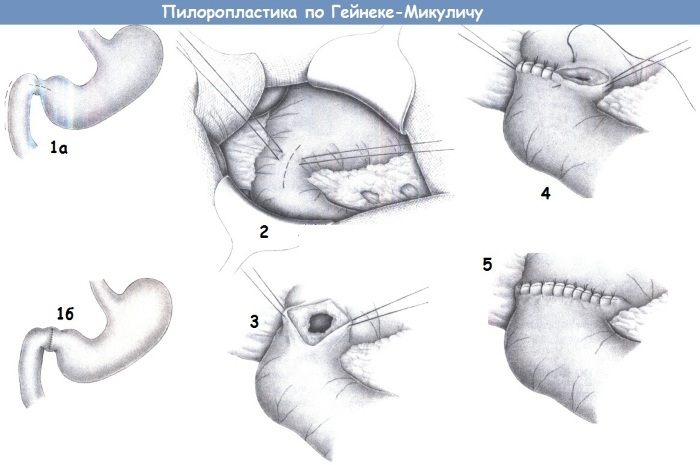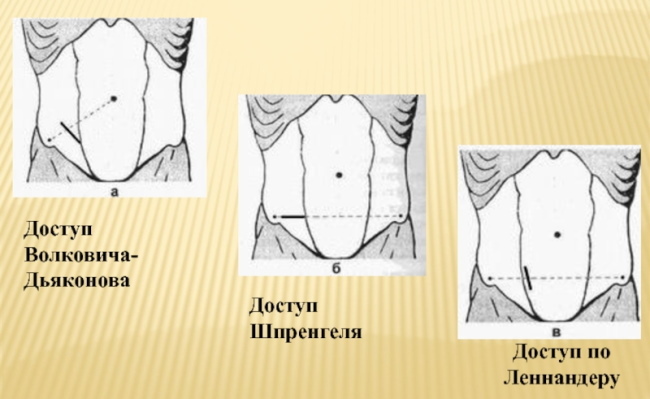Food poisoning is one of the most common diseases, which has marked symptoms (treatment needed immediately). A common cause of - entering the body stale or substandard products.
Disease occurs at any time of the year, but the peak summer months are considered. In case of incorrect treatment of the patient's condition can be difficult and dangerous to his life.
The content of the article:
- 1 General mechanisms of food poisoning
- 2 Types of food poisoning
- 3 The causes of poisoning
- 4 The first manifestations of poisoning
- 5 Common signs and symptoms of food poisoning
- 6 symptoms gastroenterocolitis
- 7 symptoms of intoxication
- 8 symptoms of dehydration
- 9 Poisoning of dairy products
- 10 Poisoning of meat, chicken, eggs, protein poisoning
- 11 Poisoning confectionery
- 12 fish poisoning
- 13 mushroom poisoning
- 14 Canned food poisoning, botulism
- 15 Emergency aid for poisoning
- 16 Actions in case of loss of consciousness
- 17 When should you call the doctor
- 18 Diagnostics
- 19 poisoning treatment at home
- 20 medication
- 21 Folk remedies
- 22 Diet
- 23 Features of treatment of food poisoning in children
- 24 Complications and consequences
- 25 Videos about the treatment of food poisoning
General mechanisms of food poisoning
Food poisoning develops as a result of ingestion of bacteria in a large amount, which come from food. They irritate the walls of the stomach and intestines, and then there are the first symptoms of the disease. Part received toxins into the blood, resulting in the total toxicity.
Distinguish between inflammatory and non-inflammatory type of food poisoning. When the inflammatory cells to the mucosa type casing are cytotoxins that promote penetration of microorganisms in the intestines. Not inflammatory food poisoning caused by enterotoxin that do not contribute to the penetration of microorganisms in the intestines.
Types of food poisoning
Food poisoning symptoms and treatment may have various, depending on the type, the number of drivers who have fallen into the organism, and other factors.

| Types of food poisoning | Pathogens | Characteristics |
| bacterial | salmonellosis | They are carriers of various animals: poultry, pigs, cattle and others. Therefore, eggs, milk, their meat can contain salmonella. Without pre-heat treatment, such food may cause human food poisoning. Its symptoms are serious: nausea, diarrhea, fever up to 40 ° C. |
| Staphylococcal food poisoning | This type of poisoning is very similar to salmonella, but harmful substances enter the food from people who suffer purulent diseases (tonsillitis, suppurative skin diseases), as well as cows, which have a mastitis. Thus, the infected can be milk, eggs, meatballs, liver, salads and other foods. If poisoning appears abdominal pain, nausea and vomiting. | |
| Botulism | It is dangerous if it enters the canned products. Even when heated to 120 ° C, it is impossible to destroy the pathogen. Therefore, getting into canned, without oxygen, the pathogen spores begin to germinate. That is why often with botulism cans swell. This type of poisoning is dangerous to humans, because it can be fatal. People poborovshis poisoning restored long time (several months). |
|
| not bacterial | mushrooms | Poison can be inedible mushrooms, such as fly agaric, false mushrooms that can accidentally get into food. Depending on the type and the amount eaten fungi, the severity may be mild (not requiring treatment) until death. |
| solanine | It is found in the skins of green potato. Poisoning manifests itself in the form of the following symptoms: diarrhea, vomiting. They can appear up to 11 days until the toxins are not completely out of the body. |
The causes of poisoning
The main reasons that cause food poisoning, include foods and beverages that contain a particular pathogen. However, not always the food can cause them.
According to statistics, common causes symptoms of poisoning symptoms include:
- the use of raw water;
- unwashed berries, vegetables and other foods;
- stale milk and milk products;
- food held insufficient heat treatment;
- spoiled fish, eggs and other products;
- inedible mushrooms;

- dirty hands, who takes food;
- products that have been stored for too long;
- chemicals that are processed foods to enhance the appearance and prolong shelf life.
The first manifestations of poisoning
First signs of the disease may occur after 2-24 hours after exposure of contaminated or spoiled food in the stomach.
For one of the first symptoms may include:
- sharp pain in the abdomen;
- nausea;
- elevated temperature (sometimes up to 40 ° C);
- bloating;
- diarrhea;
- vomiting;
- general weakness in the body;
- low pressure.
These symptoms may occur together (at strongest poisoning) or separately.
Common signs and symptoms of food poisoning
Food poisoning (symptoms and treatment depend on the type of food, and other factors) can have the same symptoms:
- diarrhea from 3 or more times a day;
- sharp pain in the stomach and the stomach;
- nausea and vomiting;

- headache or dizziness;
- general malaise;
- fever and chills.
These symptoms manifest in most cases, any poisoning.
symptoms gastroenterocolitis
Gastroenterocolitis 2 forms may be:
- Acute. It begins dramatically with the rapid deterioration of health.
- Chronic. Develops due to gastrointestinal diseases. May have periods of exacerbation and remission.
Symptoms of the disease are as follows:
- flatulence and bloating increased;
- diarrhea, which develops either to early disease, either after 3 days (toxicity);
- blood in the stool;
- aversion to food, lack of appetite;
- fever;
- dizziness;
- fainting (in severe cases);
- pain in the navel pulling or cramping in nature;
- belching and heartburn with bitterness;
- nausea and frequent vomiting;
- constipation.

Often gastroenterocolitis symptoms occur for the following reasons:
- entering the body Salmonella, E. coli and other pathogens affecting the mucosa;
- rotavirus infections;
- manifestation of food allergy;
- penetration of toxins in the digestive tract.
symptoms of intoxication
Intoxication occurs after toxins enter the blood stream. It promotes the violation of internal organs. The degree of intoxication directly to the severity of the disease depends.
Common symptoms of intoxication, the following:
- malaise;
- fever;
- nausea and vomiting;
- heart palpitations;
- muscle weakness;
- chills;
- convulsions;
- headache.
If the degree of intoxication light, then most of the symptoms will be. It can only be a slight weakness and chills. When the average degree of all symptoms expressed moderately. If the degree of intoxication, severe, all the symptoms of pronounced.
symptoms of dehydration
Dehydration - a frequent phenomenon in various kinds of poisoning. It arises due to the fact that the body of a person with vomiting and diarrhea come not only toxins, but there is fluid loss.
Food poisoning (symptoms and treatment should check with your doctor) can cause dehydration, which is expressed as the following features:
- malaise in the body;
- thirst sensation;
- headache;
- dry mouth;
- lack of voice;
- low blood pressure;
- nausea and vomiting;
- infrequent urination;
- weak pulse;
- deterioration in skin elasticity;
- diarrhea.
State of dehydration is dangerous, so you should promptly introduce a liquid into the body. The sick person should not give up drinking. In severe cases, the water balance is reduced with intravenous administration of some drugs.
Poisoning of dairy products
Dairy products can be a source of food poisoning if they are improperly stored. Additionally, some pathogens can get to them from an external source, e.g., from a person who has purulent diseases (staphylococci in milk). If you eat dairy products without additional heat treatment, that is the risk of salmonella.
The main symptoms of poisoning include:
- diarrhea;
- nausea and vomiting;
- abdominal cramps;
- temperature rise;
- fainting and seizures;
- weakness.
Typically, symptoms occur 3 to 7 days. Sometimes in low-poisoning, they pass for 1 day.
If poisoning in dairy products do not need medical attention if they have no serious symptoms.
A specialist will need to apply if:
- patient temperature above 38,5 ° C;

- abdominal pain increases;
- are gastrointestinal diseases;
- chair more than 10 times a day;
- passes nausea and frequent vomiting;
- there is the presence of veins in the stool blood and mucus;
- signs of the disease are progressing and do not pass.
Sometimes poisoning can be confused with other serious illnesses because of similar symptoms.
Poisoning of meat, chicken, eggs, protein poisoning
Excessive consumption of protein foods, particularly meat, increases the level of proteins in the blood. This leads to problems with all the internal organs.
This type of poisoning has the following symptoms:
- flatulence and bloating;
- fever;
- nausea and vomiting (can only be nausea);
- insomnia;
- irritability;
- dark-colored urine.
Threat to the life of such poisoning is not, if early treatment.
Poisoning confectionery
Confectionery products include creams and toppings, which can grow harmful bacteria. This becomes possible due to improper storage, non-compliance during product preparation, the application of low-quality raw materials, the use of preservatives.
The main symptoms of poisoning confectionery include:
- bloating;
- liquid and frequent stools;
- heart palpitations;
- low pressure;
- dizziness;
- muscle weakness;
- nausea and vomiting;

- pale skin;
- fever;
- dizziness.
fish poisoning
Fish Poisoning may be due not only to the use of no fresh food, but also with the ingestion of poisonous species. The most common ordinary food poisoning is not fresh fish products.
Its main symptoms are the following:
- diarrhea;
- nausea, retching;
- sharp pain in the abdomen;
- malaise;
- fever.
If the poisoning was due to the ingestion of the poison, which contain some fish, then to the essential features of the disease added yet neurological disorders:
- itching;
- loss of sensation;
- numbness of the tongue;
- metal taste in the mouth;
- weakness in the muscles.
mushroom poisoning
The poisoning occurs after eating mushrooms a couple of hours, and in some cases later. It depends on the amount and type of mushroom eaten, the body weight and a number of other reasons.
In most cases, the disease has the following features:
- cramping abdominal area;
- diarrhea;
- nausea and retching;
- stool with blood;
- convulsions;
- increased sweating;
- hallucinations;
- respiratory failure.
It should be noted that vomiting can be very abundant, and diarrhea - up to 30 times per day. Sometimes it may be fatal.
Canned food poisoning, botulism
Botulism develops in canned products, since it creates ideal conditions for breeding. Most often botulism occurs in a jam, and canned mushrooms, not heat treated. Very rarely it can occur in canned with vinegar and tomato juice.
The main symptoms of poisoning following canned food:
- diarrhea;
- dry mouth;
- nausea;
- vomiting;
- malaise;
- reduction of the concentration;
- headache;
- respiratory insufficiency;
- heart failure;
- bluish skin;
- confusion.
When botulism urgent need to call an ambulance, because some of the symptoms are life-threatening.
Emergency aid for poisoning
In most cases of poisoning take place within 2 days and do not require any special medication.
However, in order to improve the patient's condition, it is necessary:
- renounce the use of food for a few hours;
- stomach wash using potassium permanganate solution and cause vomiting;
- do an enema, if there is no diarrhea;
- drink alkaline water, which will prevent dehydration;
- sorbents used to help absorb toxins and other harmful substances.
If poisoning is severe, it is necessary to call an ambulance.
Actions in case of loss of consciousness
Unconsciousness is dangerous, because a man can not control himself. As a result, it can be opened vomit choke vomit. To avoid this, a number must be a person who will monitor the patient's condition.
When syncope is necessary:
- turn the patient on his side;
- tilt your head so that the face was underneath.
These actions will help to avoid the tongue in the throat and choking vomit.
You can not wash the stomach, if a person loses consciousness.
When should you call the doctor
Call a physician is required if:
- poisoning be severe: there is loose stools with blood, vomiting;
- suspected botulism;
- mushroom poisoning;
- poisoning caused by salmonella;
- the patient enters the high-risk group: pregnant women, children, elderly people with chronic diseases.

Timely call a doctor to avoid complications.
Diagnostics
When food poisoning a doctor for diagnosis uses:
- patient survey;
- visual inspection of the patient;
- test results.
For diagnosis using tests:
- urine;
- blood;
- vomitus.
On examination, the patient, the specialist assesses:
- skin;
- consciousness;
- body weight;
- the state of the stomach;
- body temperature;
- facial expression.
Such surveys can help determine the degree of severity of the poisoning and take timely corrective action.
poisoning treatment at home
Food poisoning (symptoms and treatment should check with a doctor) - a frequent phenomenon. Facilitate home the patient's condition can only be the case if the disease is mild.
Can help the patient by means of:
- Gastric lavage. It is washed with a liquid, such as potassium permanganate solution.

- Staging an enema to cleanse the bowel.
- Use of sorbents, such as activated carbon or Enterosgelya.
- fluid intake to avoid dehydration.
medication
When drug therapy is applied preparations such group as sorbents. Once in the body, they do not allow toxins to be absorbed into the blood. When food poisoning group of drugs is applied only after gastric lavage.
The following are the most popular drugs from the group of sorbents:
- Polisorb. The drug is added to water and used inside.
- Enterosgel. It can be used for children younger than 5 years.
Another group of drugs - antibiotics. They are appointed as poisoning caused by pathogenic bacteria.
The most popular are the following types of drugs:
- tetracycline;
- Ceftriaxone.
Antiemetic and antidiarrheal medications can not be used. This is due to the fact that with the help of vomiting out of the body of toxins, and if it is stopped, then the harmful substances will cause severe intoxication.
Folk remedies
When food poisoning can use the methods of traditional medicine. They help to speed up the removal of toxins and relieve the general condition of the patient.
The following are the most popular folk remedies:
-
A decoction of chamomile. It has anti-inflammatory effect and speeds up the removal of toxins from the digestive tract. To prepare the broth you need 5 tablespoons. l. chamomile flowers placed in a bowl, pour boiling water (500 ml.) and to insist on a low heat for 15 minutes. Eat broth half a cup three times a day.

- A solution of lemon juice. The water is added to the juice of 3 lemons and a little sugar. The drink is consumed for 1 time. This facility helps to stop reproduction of bacteria.
- The infusion of fennel. On 1 st. l. dill seed is taken with 300 ml. water (boiling water). Take infusion with honey for ½ art.
- A decoction of yarrow and wormwood. 500 ml of water is required for ½ art. l. dry powdered herb wormwood and yarrow. The drink requires a simmer 5 min. Consumed during the day, until the broth is over.
- Ginger tea. For 2 h. l. ground ginger - 600 ml. water (boiling water). Infuse 30 min. Use tea need 50 ml a day.
Diet
During and after the poisoning food can be eaten in limited quantities.
Diet involves the use of food:
- chicken broth without additives;
- rice, semolina and oatmeal;
- crackers;
- fish broth;
- liquid mashed potatoes;
- eggs;
- green tea;
- fruit jellies;
- broth hips and chamomile.
For some time will be required to give up:
- fatty meat and fish;
- smoked;
- spices;
- pickled and pickled products;
- soft bread;
- confectionery;
- fresh vegetables;
- tea, coffee, carbonated beverages;
- fresh juices;
- alcohol;
- cheese and sausages.
Features of treatment of food poisoning in children
Food poisoning in children has almost the same symptoms and treatment. However, if the disease occurred in a child up to 3 years, calling an ambulance and subsequent hospitalization required.
If the child is older than 3 years, then it can help alleviate the condition as follows:
- lay in bed on the side to vomit do not fall into the throat, and the child suffocated;
- do not feed until major symptoms (vomiting, diarrhea) will not pass;
- stomach wash weak soda solution (1 hr. l. soda to 1 liter. water). Wash the stomach child only after 5 years;
- induce vomiting;
- provide a sorbent, such as activated charcoal.

Treatment at home is possible only if the food poisoning is mild.
Complications and consequences
The main consequences of food poisoning include:
- dehydration;
- inflammation of the gastrointestinal tract;
- goiter;
- disruption in the internal organs, particularly the liver and the intestine;
- fatal in severe cases (poisoning poisonous fish, mushrooms).
If the patient in a timely manner to provide medical care, the consequences for him will be minimal.
No one is safe from food poisoning, so it is necessary to know the basic symptoms and treatment of the disease. One should not forget about preventive measures that will avoid poisoning. The use of high-quality and fresh products - the guarantee of health.
Registration of the article: Mila Friedan
Videos about the treatment of food poisoning
Elena Malysheva tell how to treat food poisoning:



